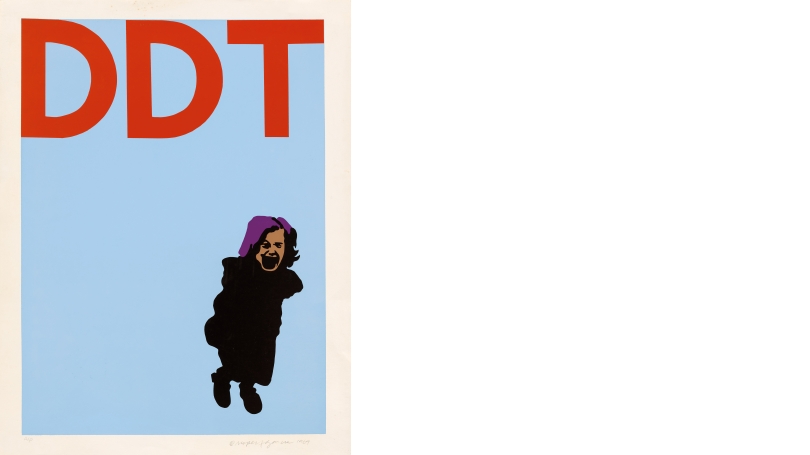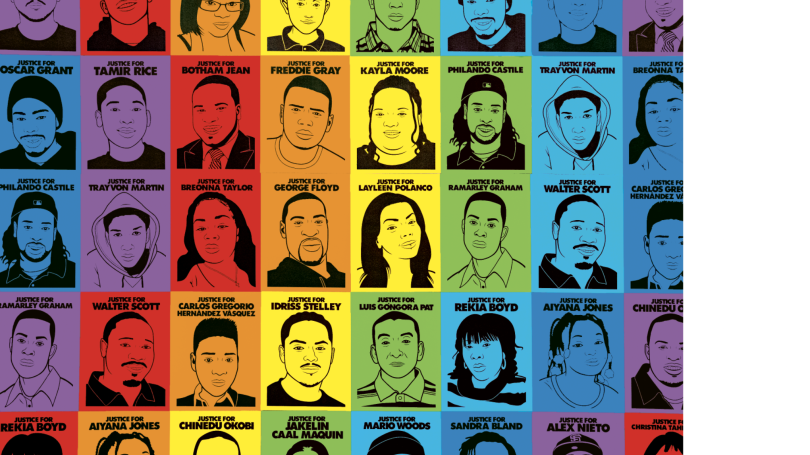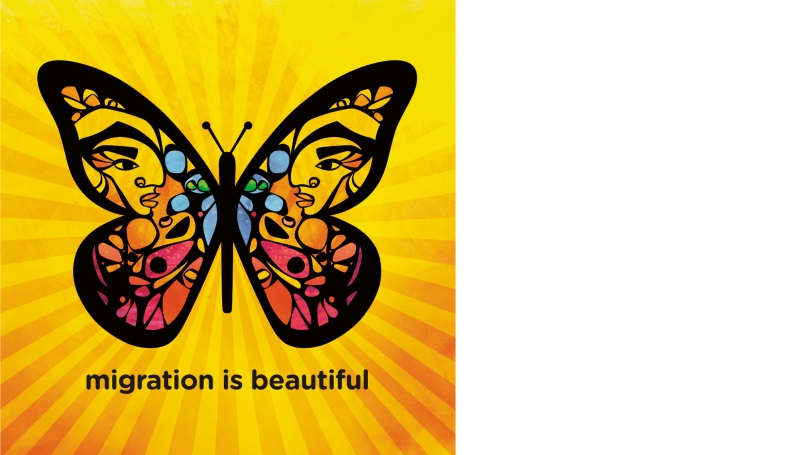MICHAEL HARTMAN, Jonathan Little Cohen Associate Curator of American Art
BEATRIZ YANES MARTINEZ, Hood Museum Board of Advisors Mutual Learning Fellow
The Hood Museum of Art is excited to host the Smithsonian American Art Museum's (SAAM) traveling exhibition ¡Printing the Revolution! The Rise and Impact of Chicano Graphics, 1965 to Now, on view February 4–June 11, 2023. Drawn entirely from SAAM's permanent collection, this exhibition features 119 artworks by more than 74 artists of Mexican descent and allied artists active in Chicanx networks.
As Smithsonian curator E. Carmen Ramos notes, "The start of the Chicano civil rights movement in the 1960s, or El Movimiento, marked a completely new way of being a person of Mexican descent in the United States. To call yourself Chicano — a formerly derogatory term for Mexican Americans — became a cultural and political badge of honor that expressly rejected the goal of melting-pot assimilation." Since then, the term Chicanx has emerged as a gender-inclusive designation.
Many artists featured in the exhibition came of age during the civil rights, labor, anti-war, feminist, and LGBTQ+ movements. Artists in the 1960s channeled the period's social activism into assertive aesthetic statements that announced a new political and cultural consciousness among people of Mexican descent in the United States. More than reflect the need for social change, the works in this exhibition also revise and celebrate notions of Chicanx identity; spur local, national, and global political activism; and encourage a broader and more inclusive understanding of US and international history.
As with the Chicano movement itself, the cornerstone of ¡Printing the Revolution! is a focus on cross-generational mentorship. Presented thematically, artworks in each gallery demonstrate how Chicanx mentors, print centers, and networks nurtured artists, including allied artists who drew inspiration from the example of Chicanx printmaking. While the dominant mode of printmaking among Chicanx artists remains screen printing, this exhibition features works in a wide range of techniques and presentation strategies, including installation art, augmented reality prints, and digital shareable graphics that circulate online.
This exhibition's presentation at the Hood Museum reflects our dedication to telling a broader, more diverse, and inclusive history of American art. Our new strategic plan emphasizes both the importance of proactively inviting new voices into the museum's spaces and practices, as well as the value of placing art and people at the center of our work to advance mutual learning, care, and connections. ¡Printing the Revolution! elevates Chicanx artists and those inspired by them, encouraging community engagement with social issues that impact all of us in one form or another.
In addition to bringing in new voices, we are taking art out of the museum and into the streets with the Poster Engagement Project developed by our Board of Advisors Mutual Learning Fellows. Many posters featured in the exhibition were used in protests or were plastered around public spaces. Reproducing these posters across campus and in the local community recaptures the original purpose of these artworks while also sparking an interest in the exhibition. Our focus on mutual learning and collaboration also led to the development of a feedback and reflection space within the exhibition where visitors can respond to the artworks. By centering programming around the communal aspects of printmaking as a medium, we hope to incentivize visitors to create connections with artmaking, make their own posters, and reflect on social-justice issues important to them.
As a teaching institution, the Hood Museum's presentation of ¡Printing the Revolution! provides an exciting opportunity to more fully engage with departments across campus, especially the Department of Latin American, Latino, and Caribbean Studies. Furthermore, the bilingual exhibition will engage Spanish language classes at the high school and college levels. As excitement mounts across campus, we look forward to Mary Coffey's spring term course, "Print the Revolution," which will be entirely constructed around the exhibition's artworks and main themes. Coffey will also lead a panel discussion with curator Claudia E. Zapata and two artists from the exhibition.
This celebration of Chicanx graphics uplifts the perspectives of Chicanx artists who encourage us to consider US history in a new way. Their creativity helped to raise the visibility of social justice issues in the United States, and we hope that visitors will be inspired to think about their personal relationships with the themes presented in the exhibition. From family and personal identity to workers' rights, immigration, and climate change, ¡Printing the Revolution! weaves a narrative that is integral to understanding our shared experience.
¡Printing the Revolution! The Rise and Impact of Chicano Graphics, 1965 to Now is organized by the Smithsonian American Art Museum with generous support from the Latino Initiatives Pool, administered by the Smithsonian Latino Center, Michael Abrams and Sandra Stewart, the Honorable Aida Alvarez, Joanne and Richard Brodie Exhibitions Endowment, James F. Dicke Family Endowment, Sheila Duignan and Mike Wilkins, Ford Foundation, Dorothy Tapper Goldman, HP, William R. Kenan Jr. Endowment Fund, Robert and Arlene Kogod Family Foundation, Lannan Foundation, and Henry R. Muñoz III and Kyle Ferari-Muñoz. It was made possible at the Hood Museum of Art, Dartmouth, by the Orozco Fund.


